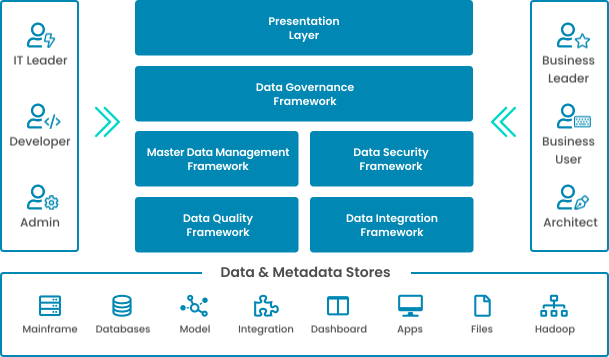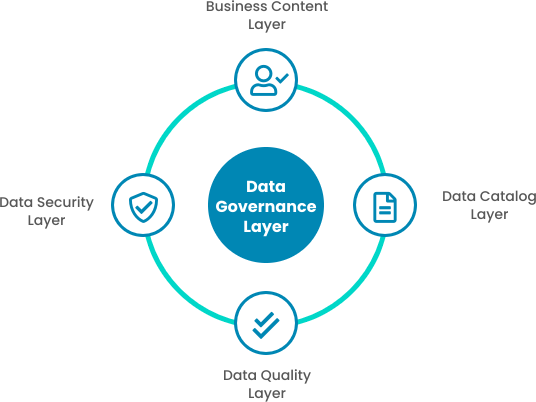DATA GOVERNANCE FRAMEWORK
Data Management Framework

DATA GOVERNANCE REQUIREMENTS
What Is Data Governance?
- Data becomes a strategic priority so does data governance
- Data Governance is not an outcome, but a means to good business outcomes
- It focuses efforts on critical data that drives the most value
- It is a strategy to centralize standards and policies
- Multiple levels of executive engagement
- Distribute data ownership in business units
- Provides accountability
- It creates TRUST
- Increase understanding
- Availability of data with known quality levels
- Helps everyone in the company to work collaboratively

Challenges
01
Data Dictionary
- What are source and target systems?
- Do you know where your sensitive data is located?
- Is this data safe?
- Is your data classified in different security classes with the appropriate governance around it?
02
Data Validity & Consistency
- Preserve Production Formats
- Referential Integrity
- Consistency & Validity
03
Lack of Data Privacy
- Loss of Reputation
- Loss of Customer
- Loss of Income
- Customer Insecurity

04
Storage Cost
- Managing Huge Volume of Data
- Identify Relationships
- Subset Criteria
- Handle Increasing Storage Cost
05
Development Cost
- Huge Amount of Time & Effort
- Managing Different Technologies
- Re-Usability
- Performance
06
Governance & Legal Regulations
- Lack of Data Governance in Enterprise Scale
- Compliance with Regulations ( GDPR, KVKK etc.)
- Penalties
Business Benefits

- Reputation
- Culture
- Inovation
- Common Business Language
- High Data Quality
- Business Glossary & Data Catalog
- Customer Centricity
- Customer loyalty
- Customer experience
- Single customer view / next best action
- Digital Transformation
- Cost Reduction
- Automated processing / re-engineering
- ↑ Value – ↓ Cost
Technical Benefits
What Is Data Governance Layer?

Data Governance Layer Approach







